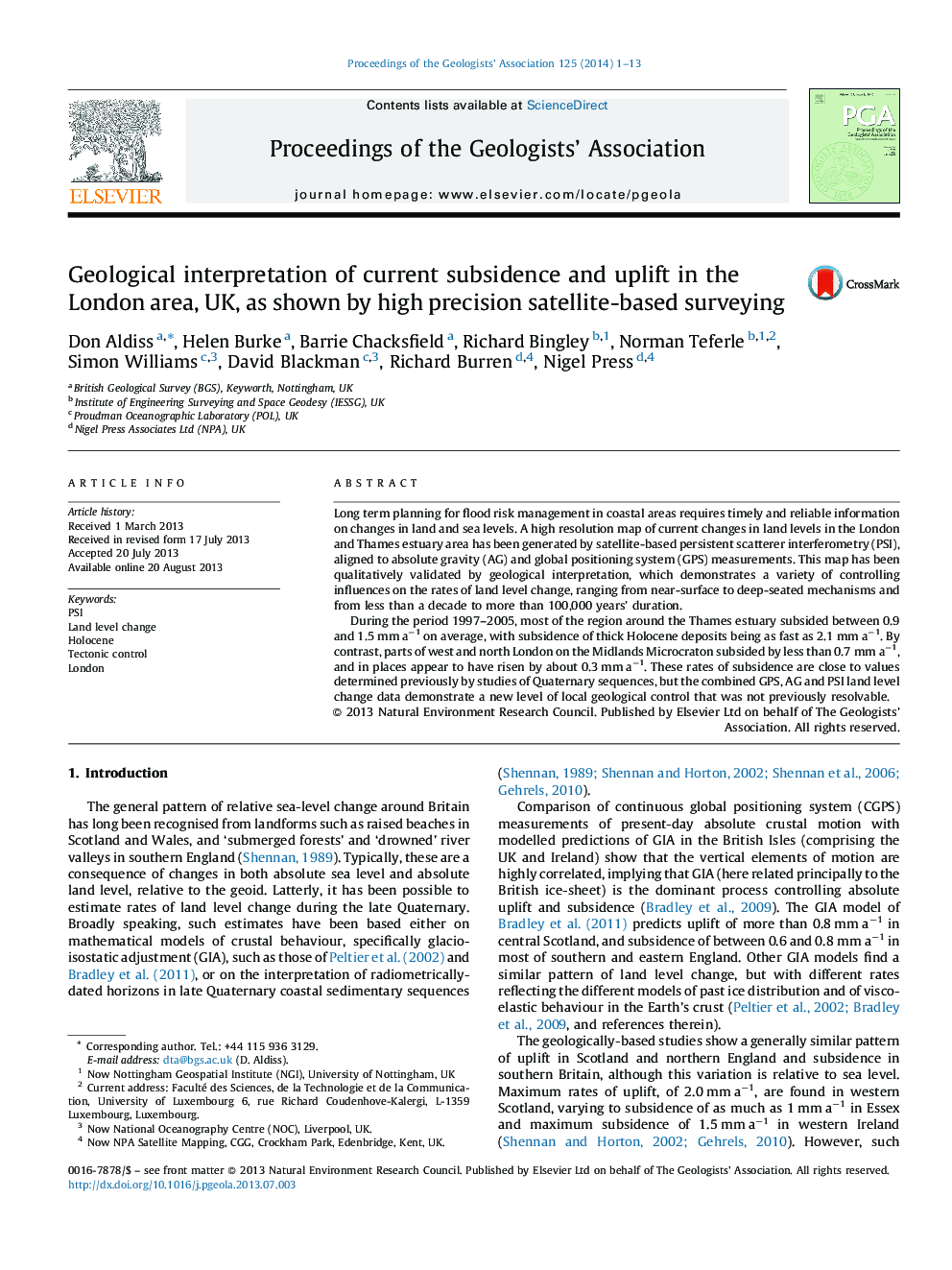| Article ID | Journal | Published Year | Pages | File Type |
|---|---|---|---|---|
| 4734633 | Proceedings of the Geologists' Association | 2014 | 13 Pages |
Long term planning for flood risk management in coastal areas requires timely and reliable information on changes in land and sea levels. A high resolution map of current changes in land levels in the London and Thames estuary area has been generated by satellite-based persistent scatterer interferometry (PSI), aligned to absolute gravity (AG) and global positioning system (GPS) measurements. This map has been qualitatively validated by geological interpretation, which demonstrates a variety of controlling influences on the rates of land level change, ranging from near-surface to deep-seated mechanisms and from less than a decade to more than 100,000 years’ duration.During the period 1997–2005, most of the region around the Thames estuary subsided between 0.9 and 1.5 mm a−1 on average, with subsidence of thick Holocene deposits being as fast as 2.1 mm a−1. By contrast, parts of west and north London on the Midlands Microcraton subsided by less than 0.7 mm a−1, and in places appear to have risen by about 0.3 mm a−1. These rates of subsidence are close to values determined previously by studies of Quaternary sequences, but the combined GPS, AG and PSI land level change data demonstrate a new level of local geological control that was not previously resolvable.
